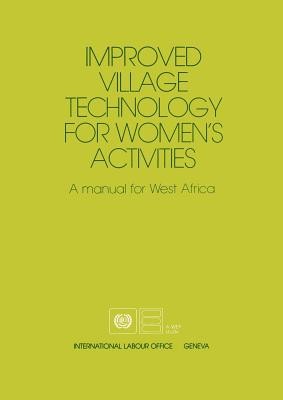
- We will send in 10–14 business days.
- Author: Ilo
- Publisher: International Labour Office
- Year: 1990
- Pages: 308
- ISBN-10: 9221038181
- ISBN-13: 9789221038184
- Format: 21 x 29.7 x 1.7 cm, minkšti viršeliai
- Language: English
- SAVE -10% with code: EXTRA
Improved village technology for women's activities. A manual for West Africa (e-book) (used book) | bookbook.eu
Reviews
Description
This manual is based on field work undertaken in the project countries (Ghana and Sierra Leone), and benefited additionally from the results of a field visit to Senegal. Its special features are: (a) the target audience consists of government institutions, rural extension services, financial institutions, women's small-scale processing enterprises and manufacturing firms; (b) it focuses on four important processing activities - of cassava, vegetable oil, coconut and fish - undertaken by rural women in West Africa; (c) it covers the range of technologies available in the subregion; (d) it makes a quantitative comparison of the performance of both traditional and improved technologies and provides information on the advantages and disadvantages of each; (e) it describes the basic design features of improved and traditional tools and equipment, materials and parts required for their fabrication; and (f) it provides a list of suppliers of such equipment. The practical value of the manual is enhanced by the inclusion of information on practical possibilities for the utilization of agricultural wastes and the by-products of women's processing activities.
EXTRA 10 % discount with code: EXTRA
The promotion ends in 21d.13:25:47
The discount code is valid when purchasing from 10 €. Discounts do not stack.
- Author: Ilo
- Publisher: International Labour Office
- Year: 1990
- Pages: 308
- ISBN-10: 9221038181
- ISBN-13: 9789221038184
- Format: 21 x 29.7 x 1.7 cm, minkšti viršeliai
- Language: English English
This manual is based on field work undertaken in the project countries (Ghana and Sierra Leone), and benefited additionally from the results of a field visit to Senegal. Its special features are: (a) the target audience consists of government institutions, rural extension services, financial institutions, women's small-scale processing enterprises and manufacturing firms; (b) it focuses on four important processing activities - of cassava, vegetable oil, coconut and fish - undertaken by rural women in West Africa; (c) it covers the range of technologies available in the subregion; (d) it makes a quantitative comparison of the performance of both traditional and improved technologies and provides information on the advantages and disadvantages of each; (e) it describes the basic design features of improved and traditional tools and equipment, materials and parts required for their fabrication; and (f) it provides a list of suppliers of such equipment. The practical value of the manual is enhanced by the inclusion of information on practical possibilities for the utilization of agricultural wastes and the by-products of women's processing activities.


Reviews